Leading concept artist Mike Butkus talked to 2dartist about the ideas behind some of his most iconic images!
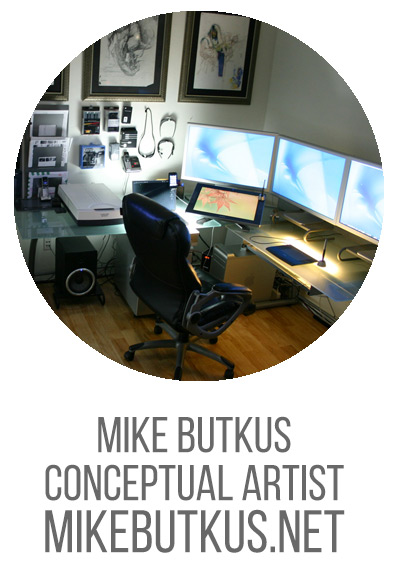 Mike Butkus is one of the leading conceptual artist for movies, TV shows, video games and toy designs for the entertainment industry. He has worked on over 3,000 projects in the last 20 years.
Mike Butkus is one of the leading conceptual artist for movies, TV shows, video games and toy designs for the entertainment industry. He has worked on over 3,000 projects in the last 20 years.
I’m a professional artist and I sketch for a living but I’ve always enjoyed drawing ever since I can remember. Since I was a kid, drawing has always been an excellent way for me to record all the kooky characters and creatures wandering around in my head. I loved creating things that didn’t exist whether it be alien environments, vehicles, steam-punk gadgetry or creatures. As an adult, to my pleasant surprise, I realized I could actually make a living doing it.
Inspiration and Ideas
I get my inspiration from my kids, traveling, quirky friends and my weird dreams.
Materials
For my color work I use cold-pressed illustration boards, Acrylic and Oil paints, Gauche, and Prismacolor pencils. For my drawings I use Black Prismacolor pencils, Graphite 9h mechanical pencils and Dura-lene paper.
Sketching Techniques
My favorite technique is drawing with black Prismacolor pencil and hard graphite on Dura-lene because the combination of these mediums produces a smooth and creamy texture to the drawing. You don’t have to work hard to create the depth and value of your lines when using this specific vellum. The downside is the expense of the paper.
 This is an Acrylic painting that was in the running for the movie poster. It was done in Acrylic paints, airbrush and color pencils on a Gesso-covered Masonite board.
This is an Acrylic painting that was in the running for the movie poster. It was done in Acrylic paints, airbrush and color pencils on a Gesso-covered Masonite board.
 In this drawing I used the technique I mentioned earlier. I start off with a sharp black Prismacolor pencil on Dura-lene paper with about twenty or more sheets underneath to create a little bounce under the pencil. Once the drawing is complete, I scan it into to Photoshop to saturate the tone and values, spending no more than a couple of minutes.
In this drawing I used the technique I mentioned earlier. I start off with a sharp black Prismacolor pencil on Dura-lene paper with about twenty or more sheets underneath to create a little bounce under the pencil. Once the drawing is complete, I scan it into to Photoshop to saturate the tone and values, spending no more than a couple of minutes.
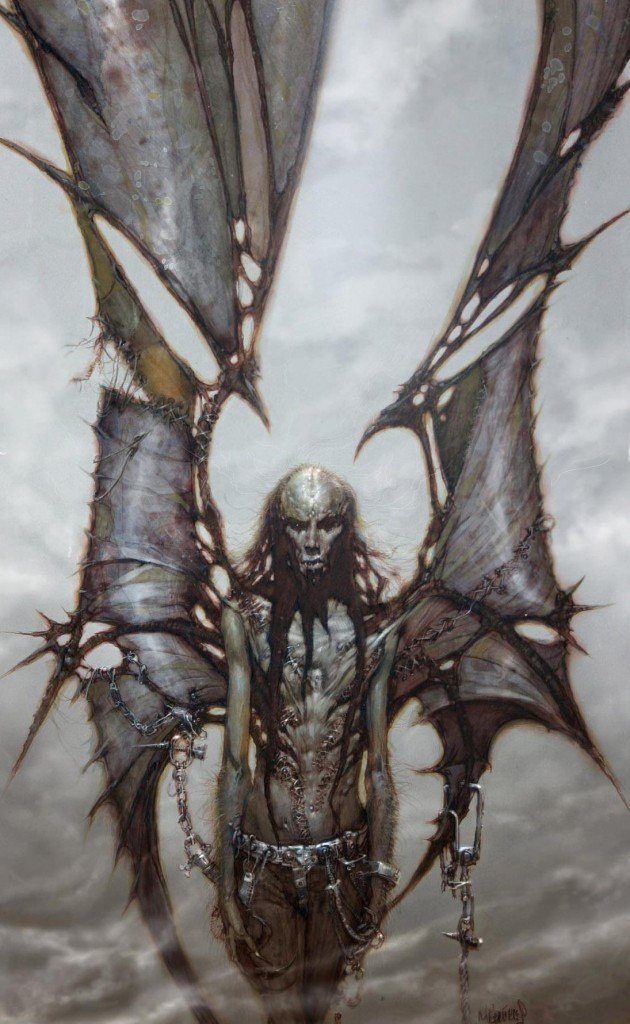 This illustration is from my book, How To Draw Vampires. It was done in Acrylic paint, air brush and color pencils on a Masonite board.
This illustration is from my book, How To Draw Vampires. It was done in Acrylic paint, air brush and color pencils on a Masonite board.
 This painting is the cover art for my book How To Draw Fallen Angels. I hired a professional model for the photo shoot so I had excellent reference to paint from. I first did a very tight drawing of him then made a Xerox copy of it and mounted it on a Masonite board. I then proceeded to paint right on top of it.
This painting is the cover art for my book How To Draw Fallen Angels. I hired a professional model for the photo shoot so I had excellent reference to paint from. I first did a very tight drawing of him then made a Xerox copy of it and mounted it on a Masonite board. I then proceeded to paint right on top of it.
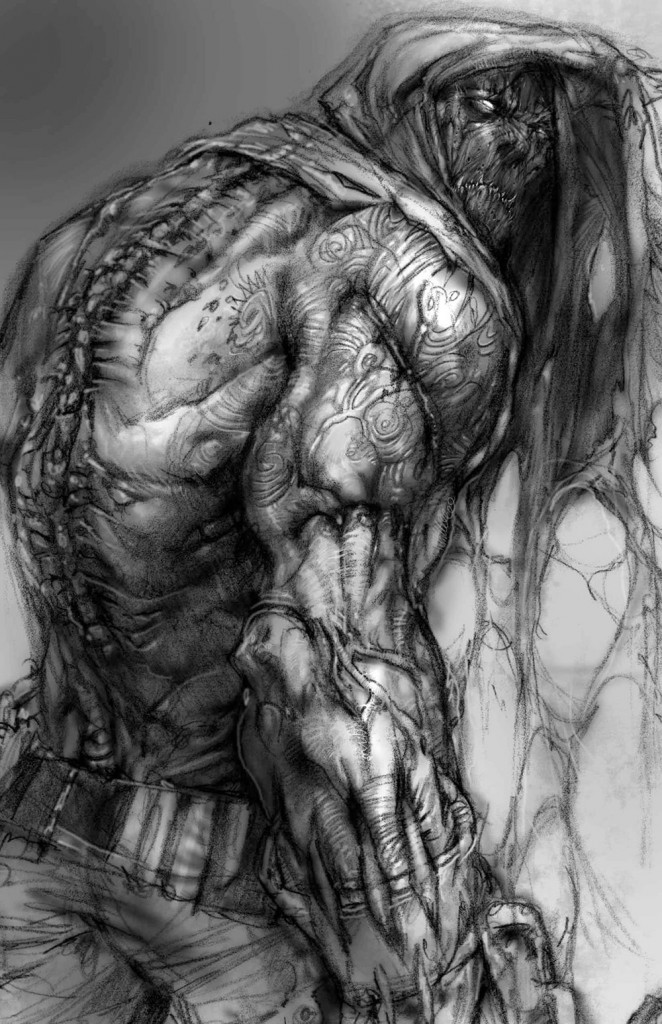 This scary zombie was done for my How To Draw Zombies book. This is a black and white drawing on Dura-lene that was then scanned into Photoshop and lightly tinted.
This scary zombie was done for my How To Draw Zombies book. This is a black and white drawing on Dura-lene that was then scanned into Photoshop and lightly tinted.
 This drawing was done on a 15’’x20’’ sketch pad using black Prismacolor pencil and black gauche washes.
This drawing was done on a 15’’x20’’ sketch pad using black Prismacolor pencil and black gauche washes.
 This illustration was a class demonstration on character design, texture, color, mechanical and organic shapes. One of these days I will find the time to finish it.
This illustration was a class demonstration on character design, texture, color, mechanical and organic shapes. One of these days I will find the time to finish it.
 This drawing is for my next book on drawing and character design. Sometimes I like to complete each part of the drawing as I work my way down. It was done on Dura-lene, using Prismaclor pencil and Gauche.
This drawing is for my next book on drawing and character design. Sometimes I like to complete each part of the drawing as I work my way down. It was done on Dura-lene, using Prismaclor pencil and Gauche.
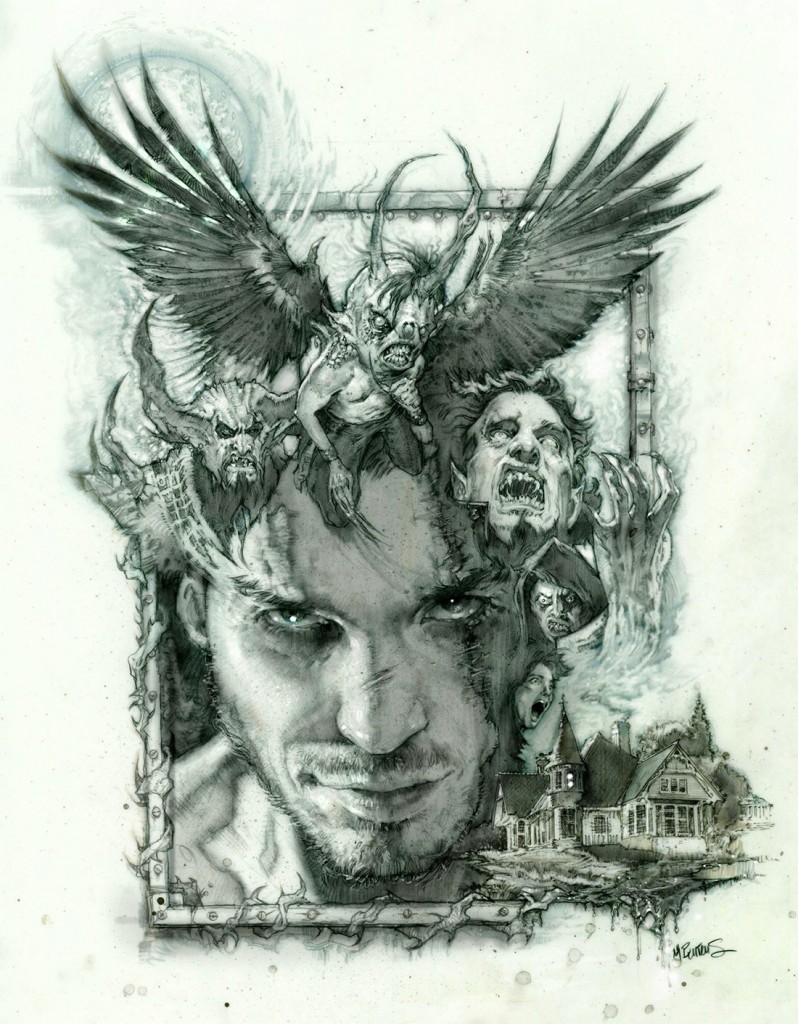 This drawing is from my How To Draw Fallen Angels book. This black and white illustration is an example of how I would go about do a movie poster or book cover art.
This drawing is from my How To Draw Fallen Angels book. This black and white illustration is an example of how I would go about do a movie poster or book cover art.
 Here I played around with some ideas for Creature X.
Here I played around with some ideas for Creature X.
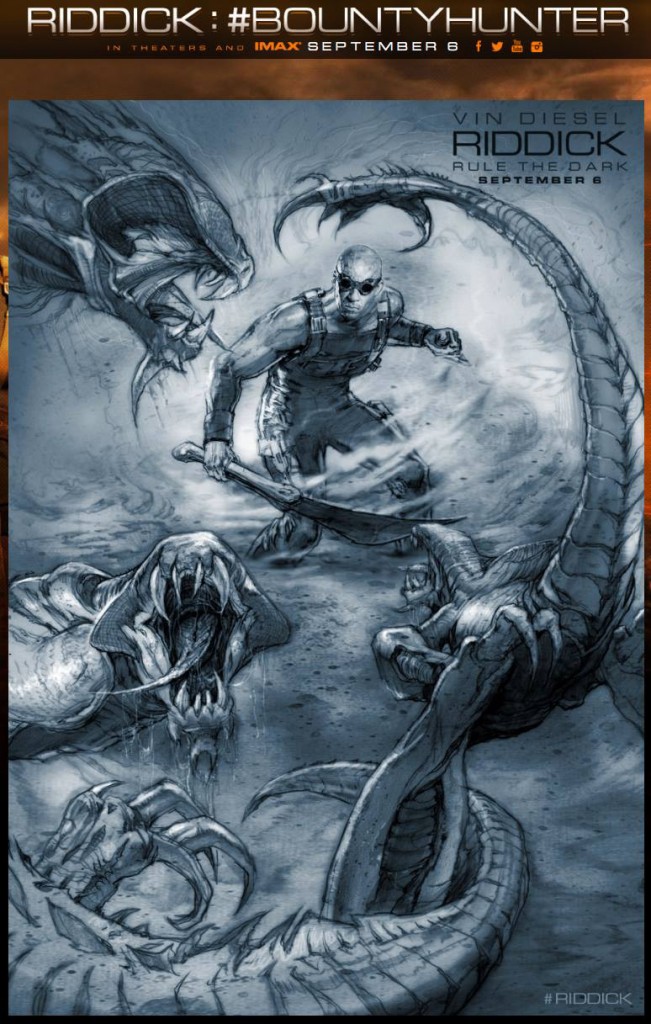 This was part of a series of drawings I did for the latest Riddick movie for their online promotional ad campaign.
This was part of a series of drawings I did for the latest Riddick movie for their online promotional ad campaign.
Sketchbook paintings
For these creature designs I use pen and ink, watercolor and Gauche. I start off with my pen, drawing big simple shapes and keeping in mind the design of the shapes and lines. All the preliminary sketching creates interesting forms and textures for the overall picture. I don’t try to fight the changes that take place. Sometimes allowing the initial sketching to come through is just as important to the mood of the drawing as the color work.
One trick I used to create the brilliant highlights is painting the area with Gesso and then using Acrylic Com Art dyes over it.
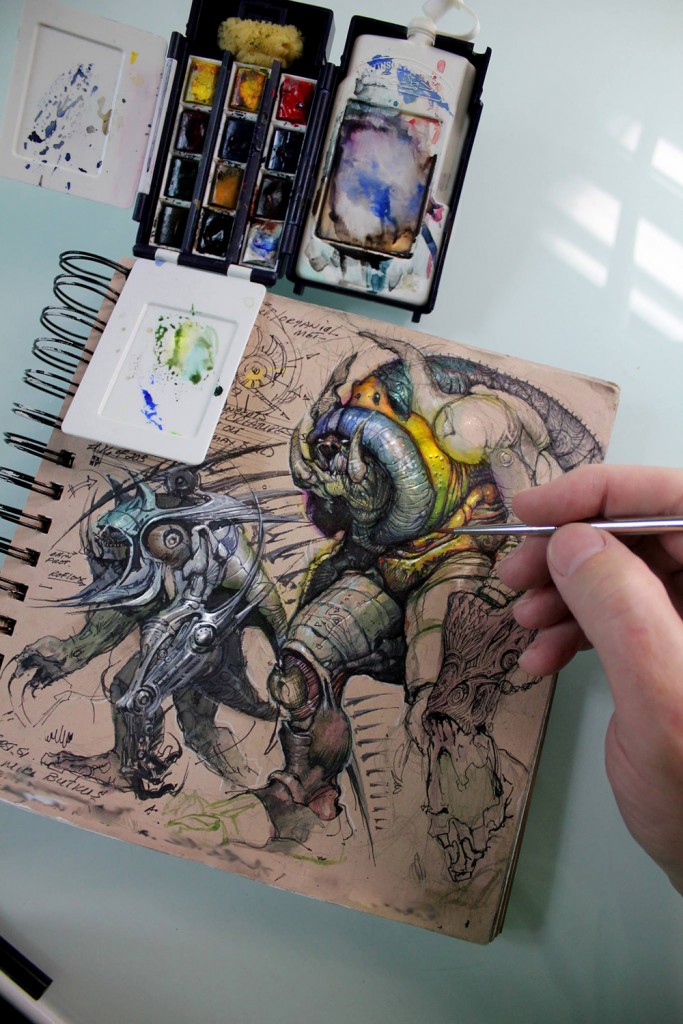 Start out with big simple shapes and accept any changes that occur
Start out with big simple shapes and accept any changes that occur
Building up values using water
Mix a lot of water with very little pigment to slowly build up the values.
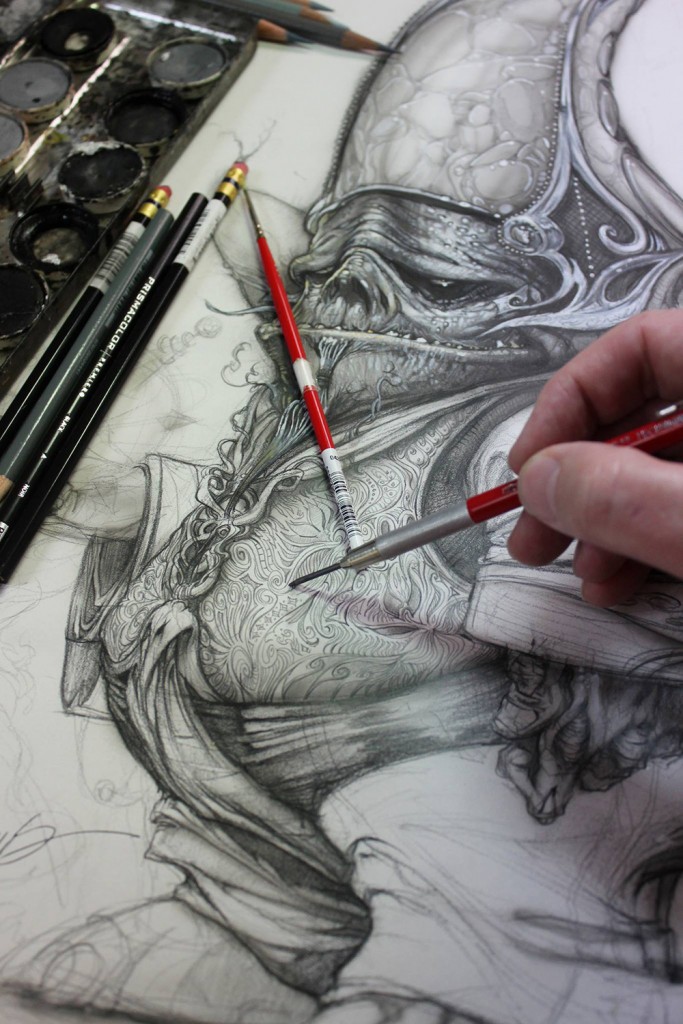 This was a character design illustration using airbrush, color pencil and graphite.
This was a character design illustration using airbrush, color pencil and graphite.
Build up values using color
Start off with very light colored markers and slowly build up your values. The gouache and color pencils are used for highlights and give the vehicle a metallic sheen.
 This was a class demonstration on vehicle design using Prismacolor markers, gouache and pencil on two-ply illustration board.
This was a class demonstration on vehicle design using Prismacolor markers, gouache and pencil on two-ply illustration board.
